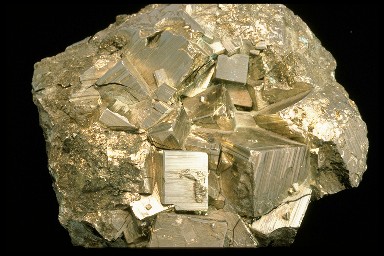Water as a liquid, solid and gas.
Click on image for full size
L.Gardiner/Windows to the Universe
Changes of State: Solids, Liquids, and Gases
Any substance, called matter, can exist as a solid material, liquid, or gas. These three different forms are called states. Matter can change its state when heated.
As a solid, matter has a fixed volume and shape and is usually unable to flow, except in the case of glaciers. For instance, an ice cube or snowflake is the solid state of water.
When the solid state of matter is heated, it turns into a liquid. As a liquid, a substance has a fixed volume, but its shape changes to fill the shape of its container. For instance, a glass of water is the liquid state of water.
When the liquid state of matter is heated, it turns into a gas. As a gas, a substance does not have a fixed volume or shape. Gas expands to fill the shape and volume of its container. For instance, the steam that comes out of a hot teakettle, making the whistle blow, is water as a gas.
Heat causes matter to change its state because, when heated, the molecules within the substance to move around faster. The faster the molecules bounce about, the weaker they are held together.
You might also be interested in:

Solid is one of the four common states of matter. The three others are gas, liquid, and plasma. There are also some other exotic states of matter that have been discovered in recent years. Unlike liquids
...more
Most things around us are made of groups of atoms bonded together into packages called molecules. The atoms in a molecule are held together because they share or exchange electrons. Molecules are made
...more
Condensation is the process by which water changes its state from a vapor or gas to a liquid. Condensation is responsible for the formation of clouds. Common examples of condensation are: dew forming on
...more
Sleet forms when a partially melted snowflake or raindrop turns back into ice as it is falling through the air. This happens when there are different layers of air beneath the cloud and these layers have
...more
Minerals occur naturally on rocky planets and form the building blocks of rocks. They are non-living, solid, and, like all matter, are made of atoms of elements. There are many different types of minerals
...more
The Kelvin scale is a temperature scale that is often used in astronomy and space science. You are probably more familiar with the Celsius (or Centigrade) scale, which is part of the metric system of measures,
...more
Makemake is a dwarf planet in our Solar System. Makemake was discovered on March 31, 2005 by a team of astronomers led by Mike Brown of the California Institute of Technology. The International Astronomical
...more















